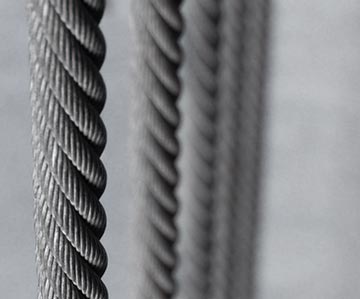The goal of sling inspections is safety for employees, materials, and a company’s name. The purpose of these reviews is to fully evaluate the health and strength of a sling to see if it should still be used. Even with proper use, wire rope slings will suffer from wear-and-tear. Daily visual inspections are vital to notice severe deterioration and damages of weakened slings. Make sure that sling inspections are only ever conducted by individuals that have intimate familiarity of these slings and all OSHA and ASME regulations related to wire rope slings and vrope.

Many common problems occur with these ropes, and for many of the issues, service should be stopped at once. If you witness any of the below issues, you should not start service until the problem is rectified.
Distortion- if you notice any birdcaging, crushing, kinking, or other similar damages, ropes should be pulled from service. Look to see if any strands or wires are pushed out of original positions.
Heat damage- when wires get fused or lose internal lubricant because of heat, the ropes should not be used. Also, look for metallic discoloration.
Broken end attachments- end fittings are subject to damage, wear, and abuse, which can cause cracks, bends, or breaks in these fittings.
Corrosion- ropes that are severely corroded should be replaced. A light surface of rust does not negatively affect the strength of a sling.
Pulled eye splices- if evidence of eye splice slippage or pulling is noticed, it may be best not to use slings.
Related Reading about Wire Rope